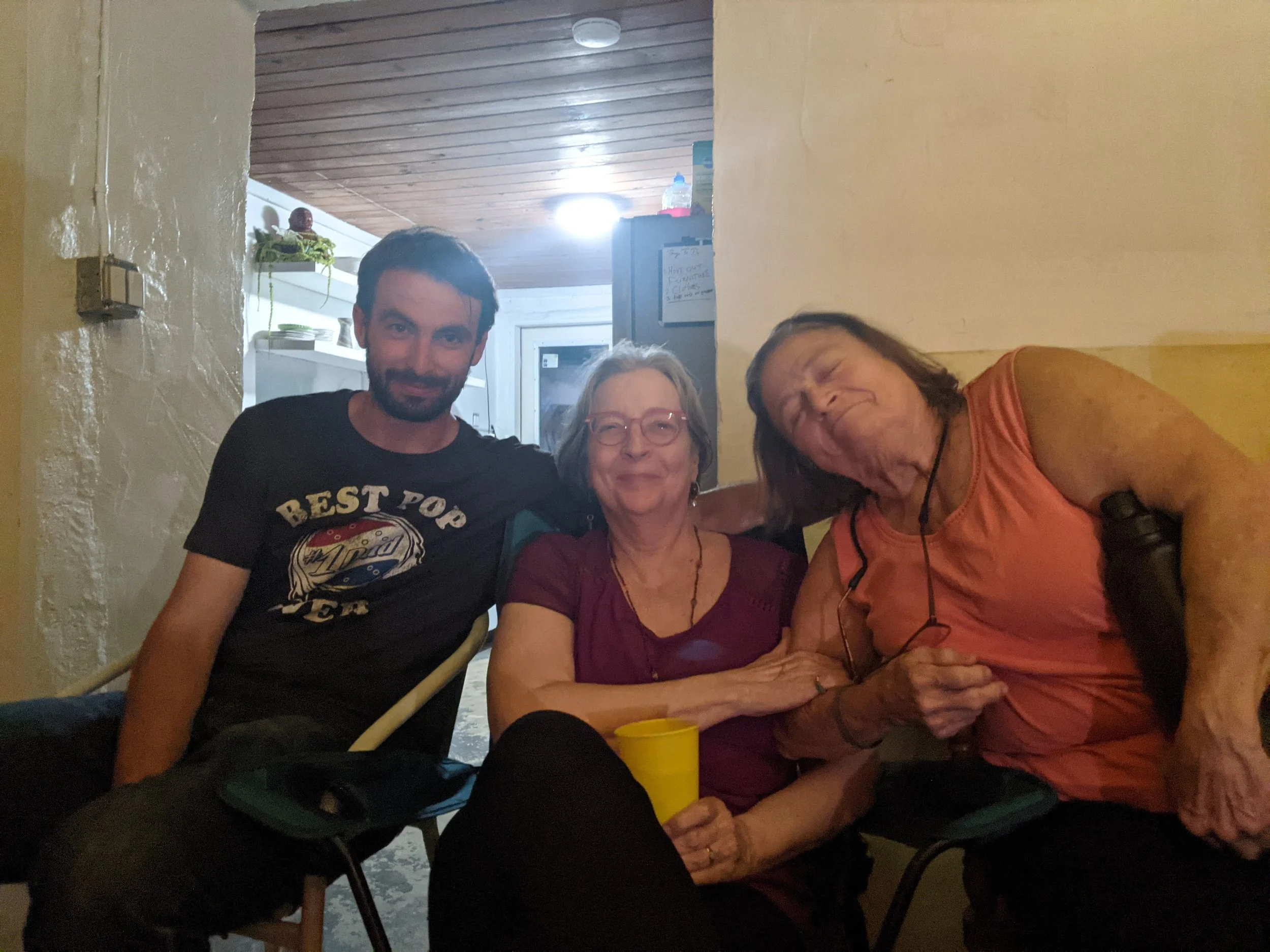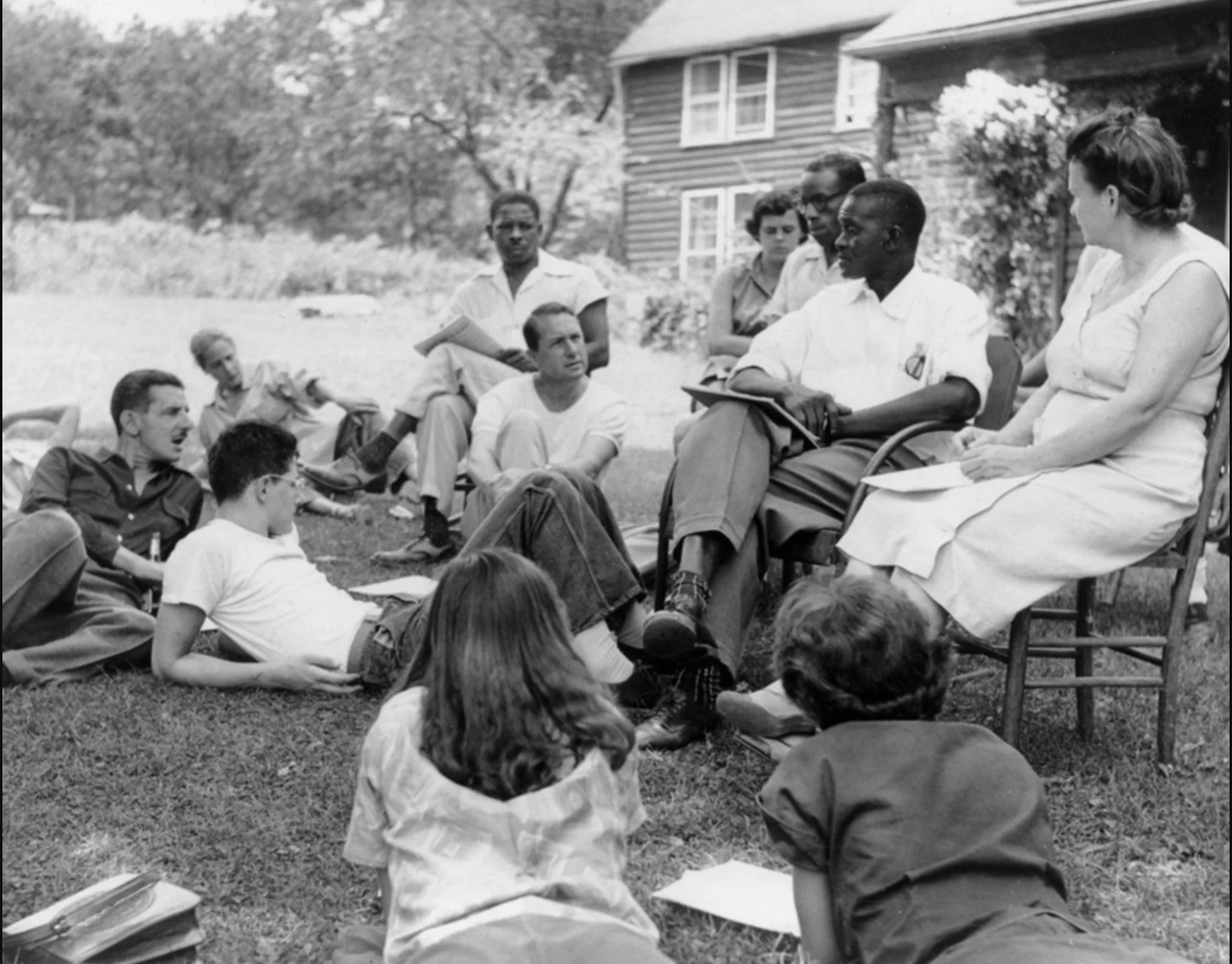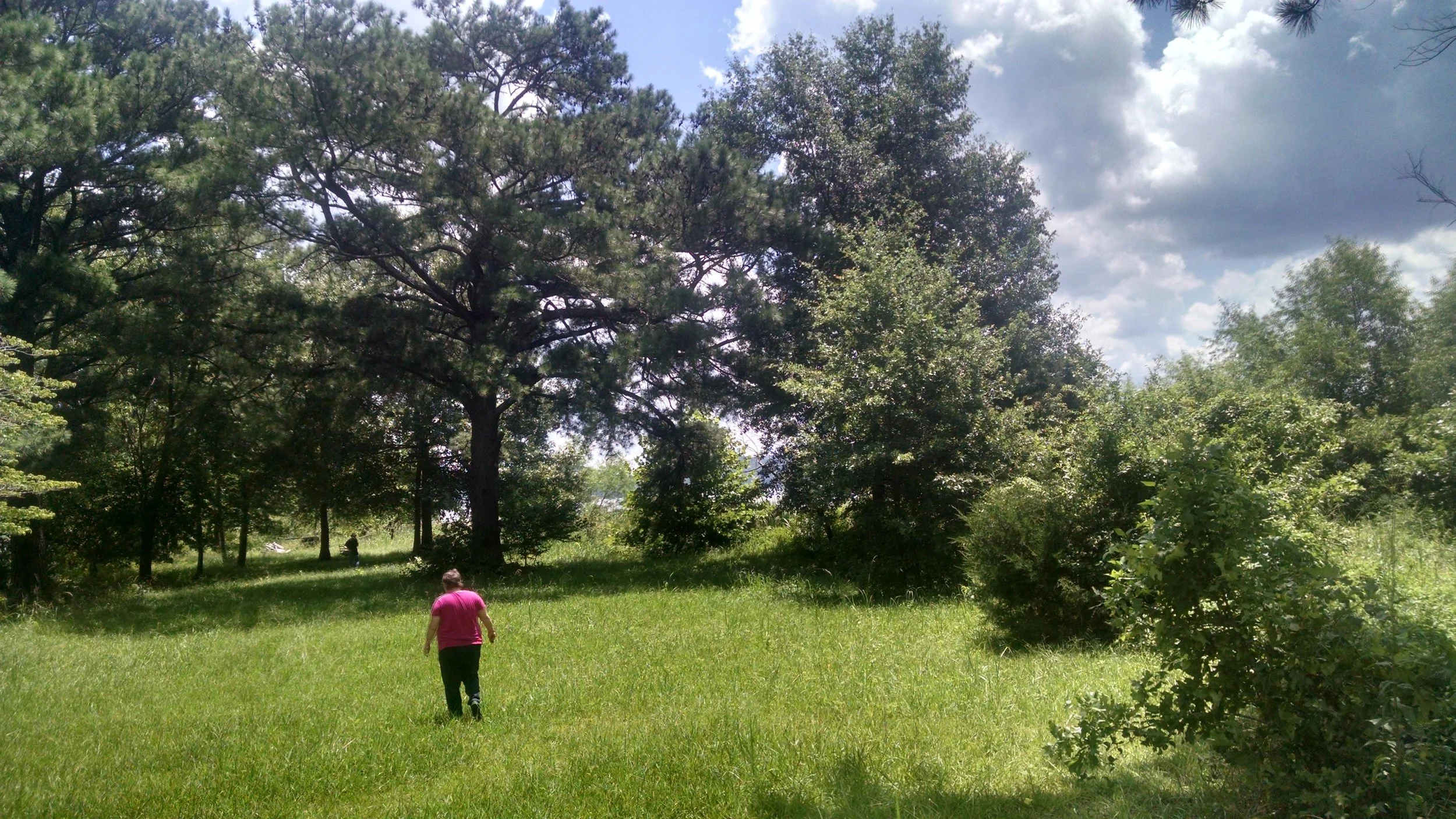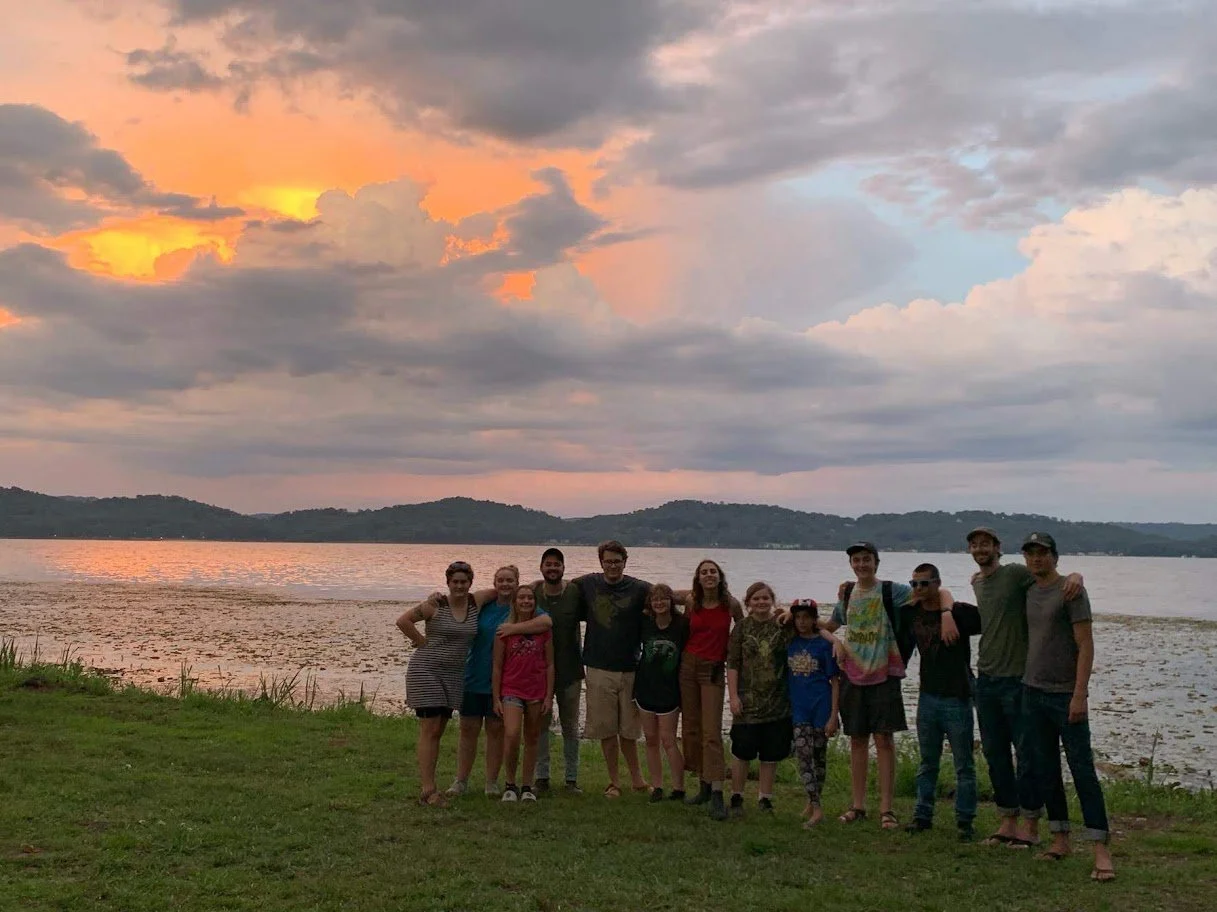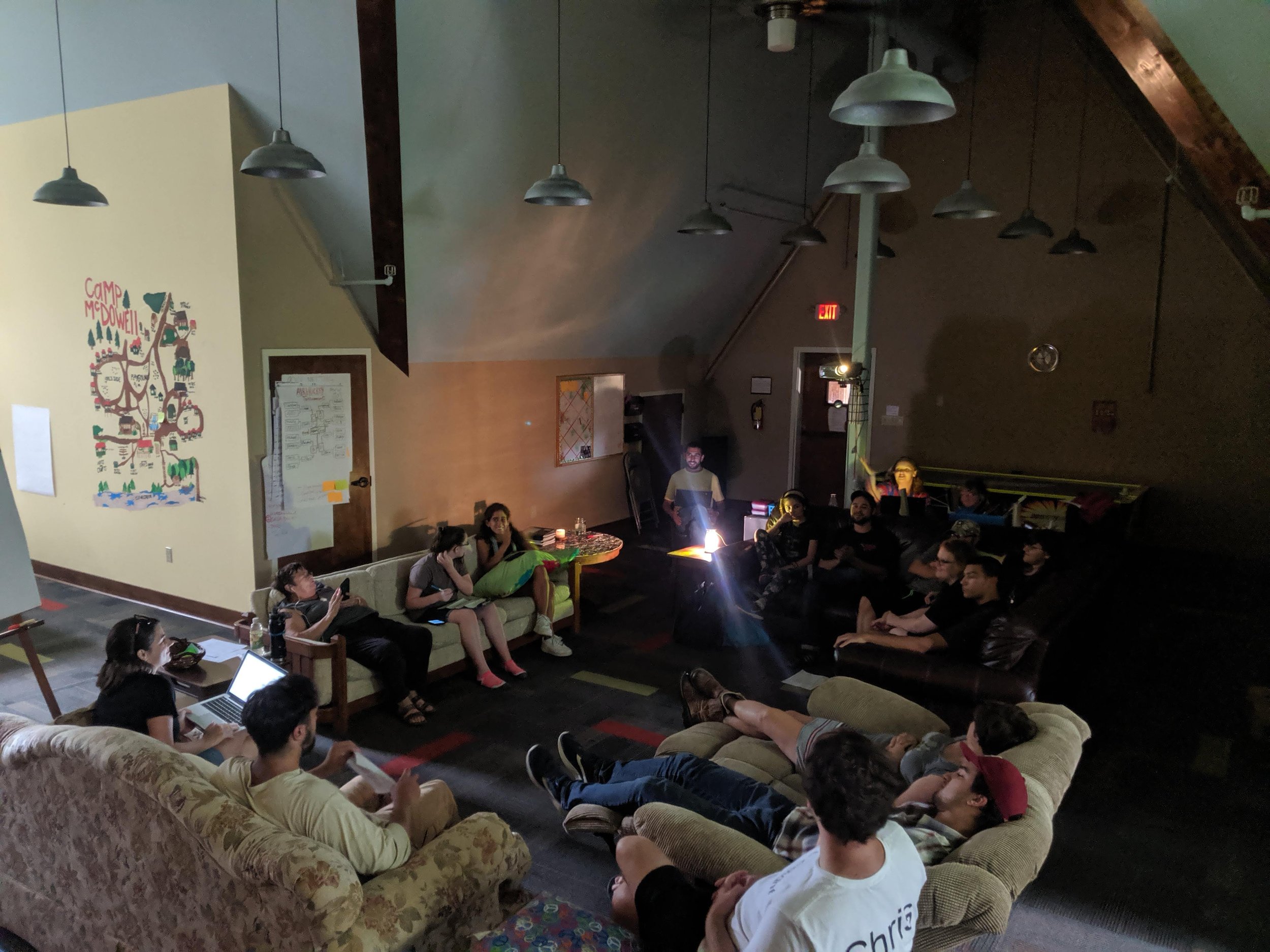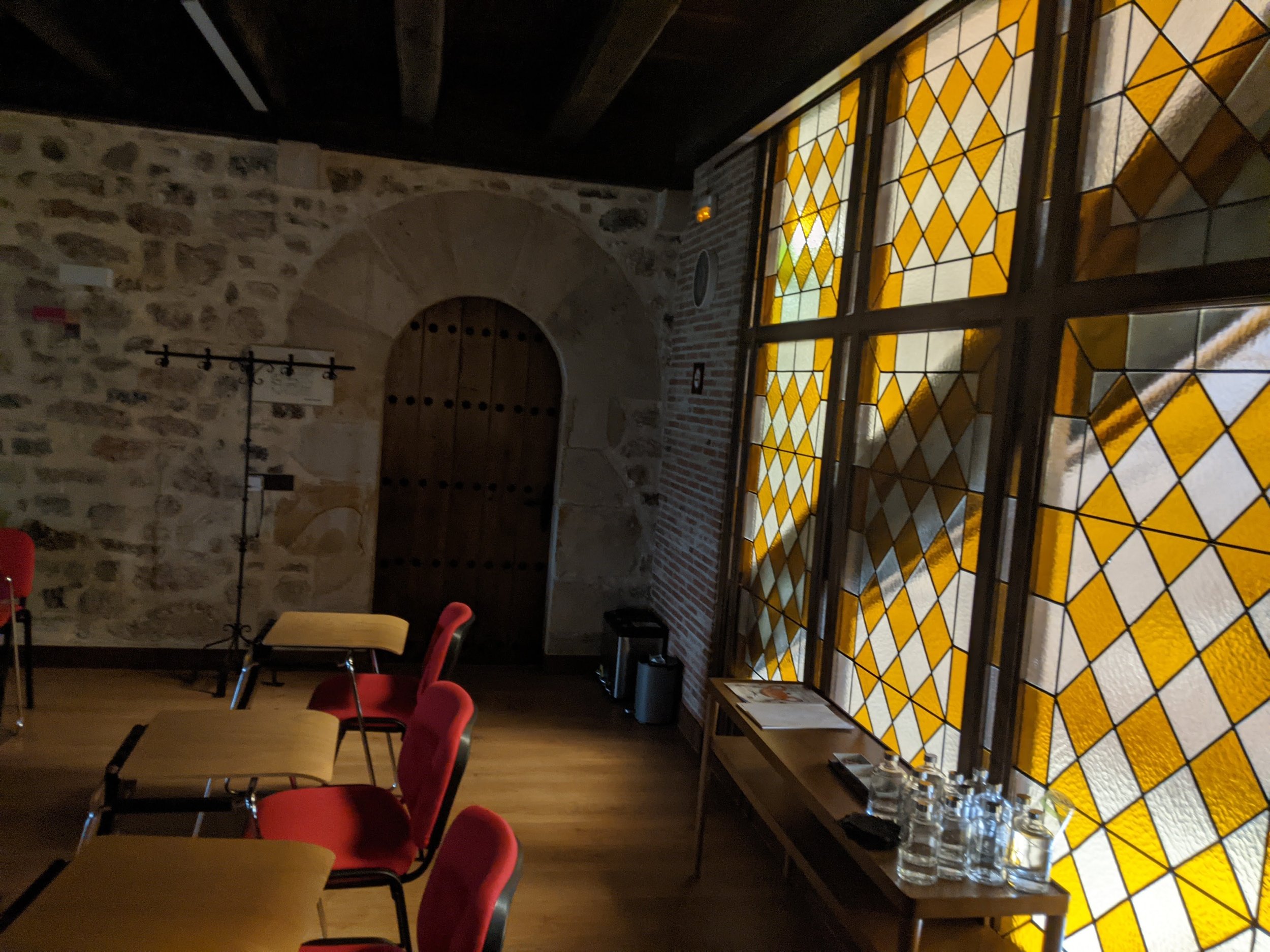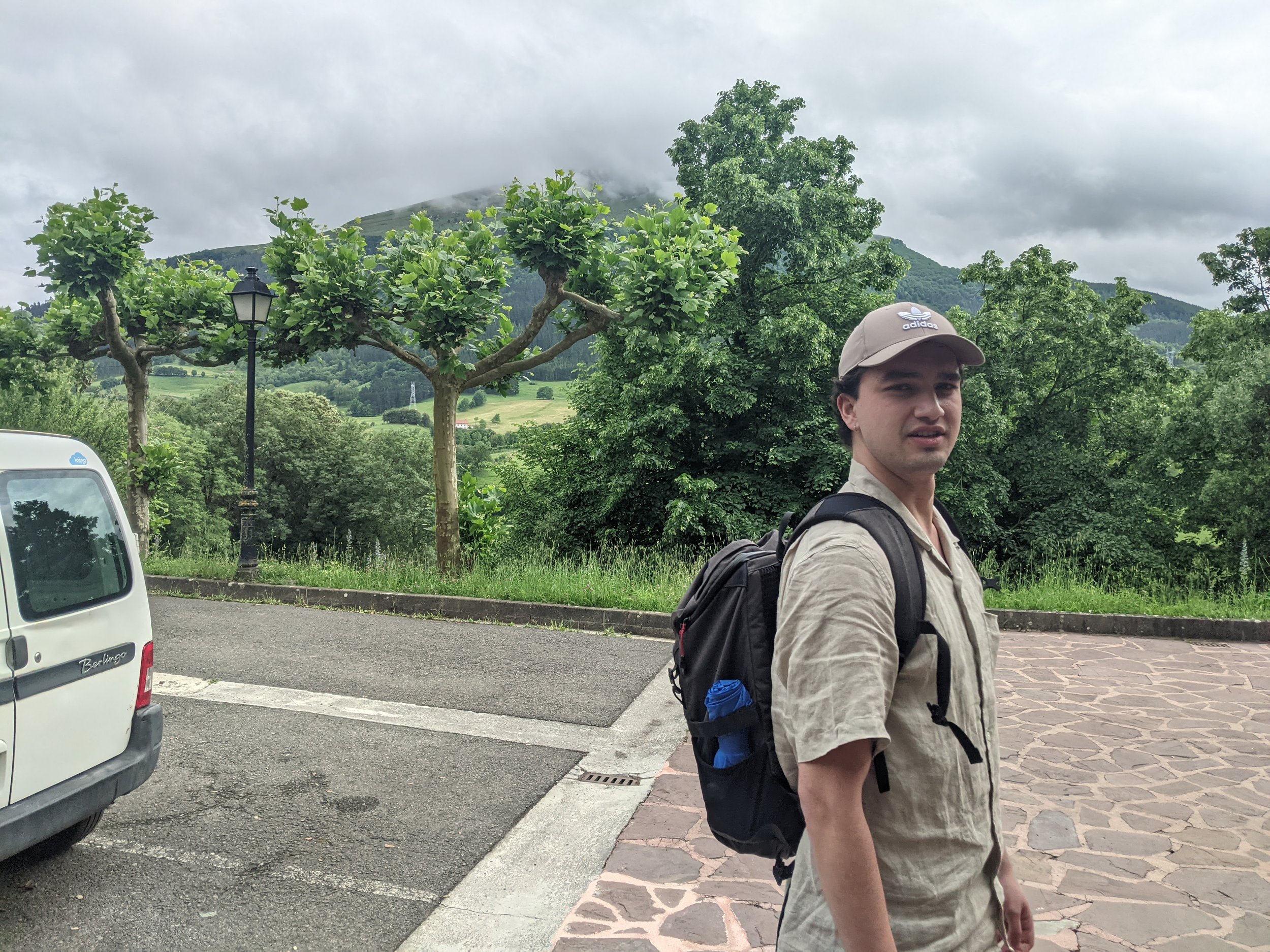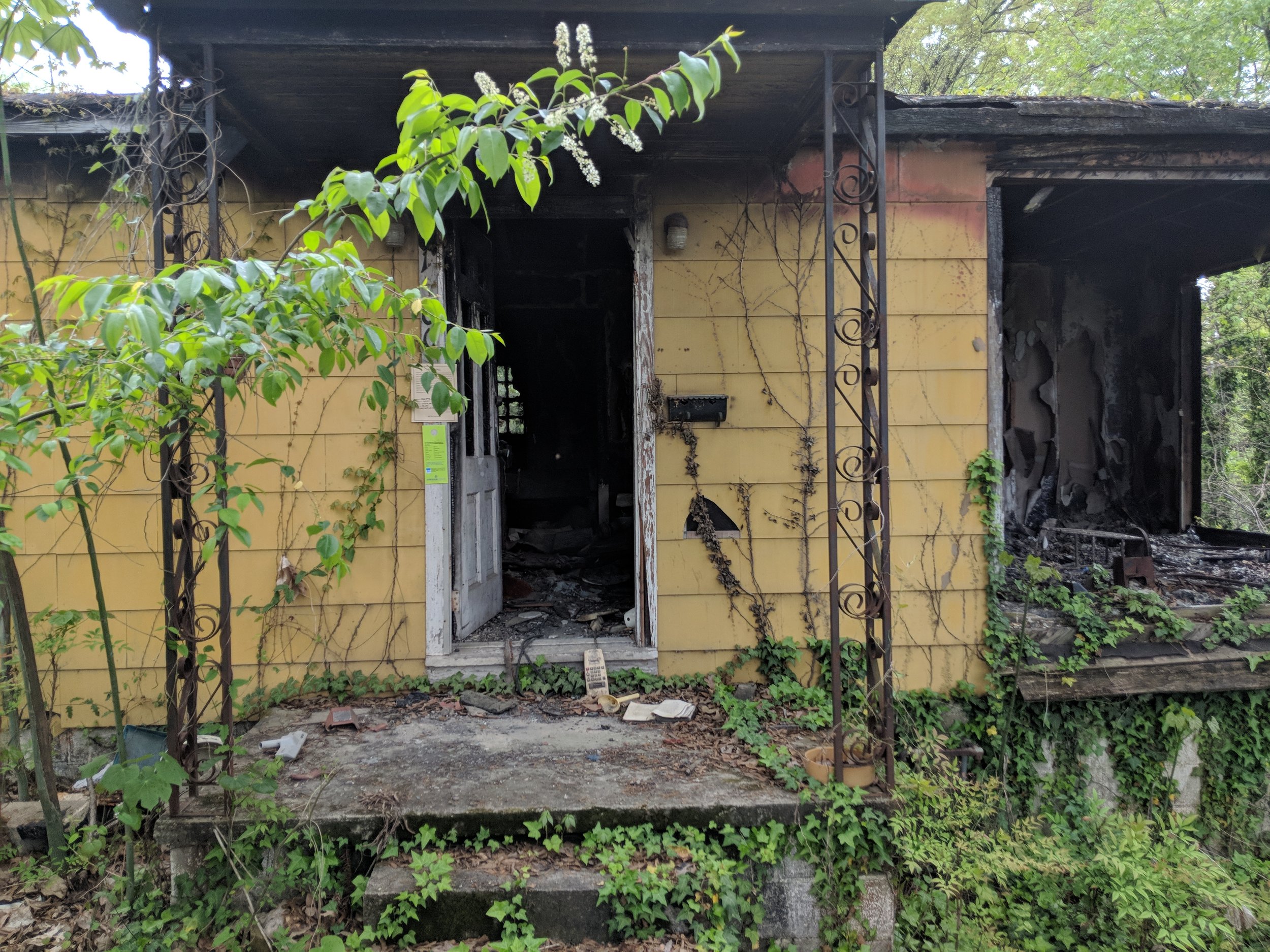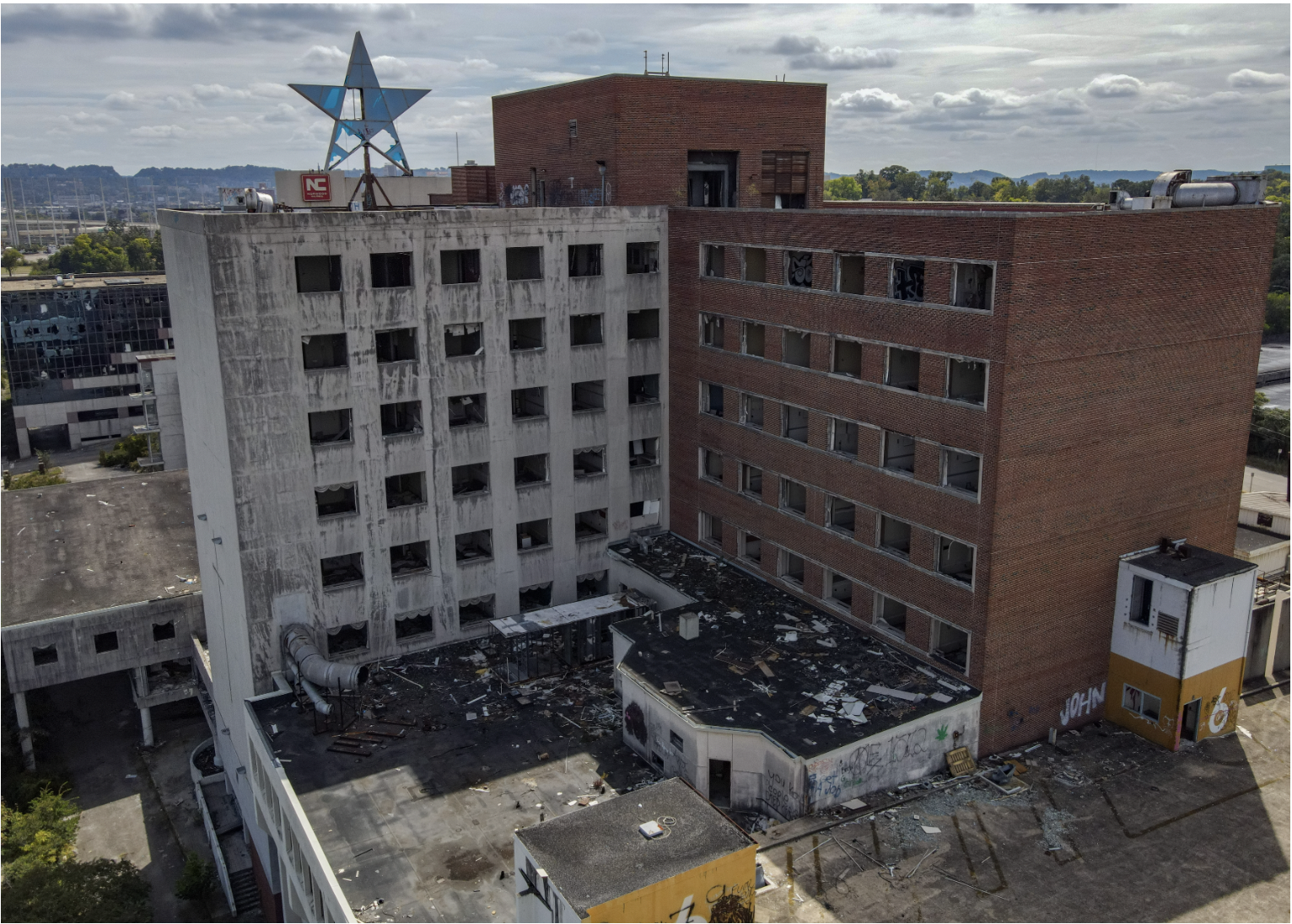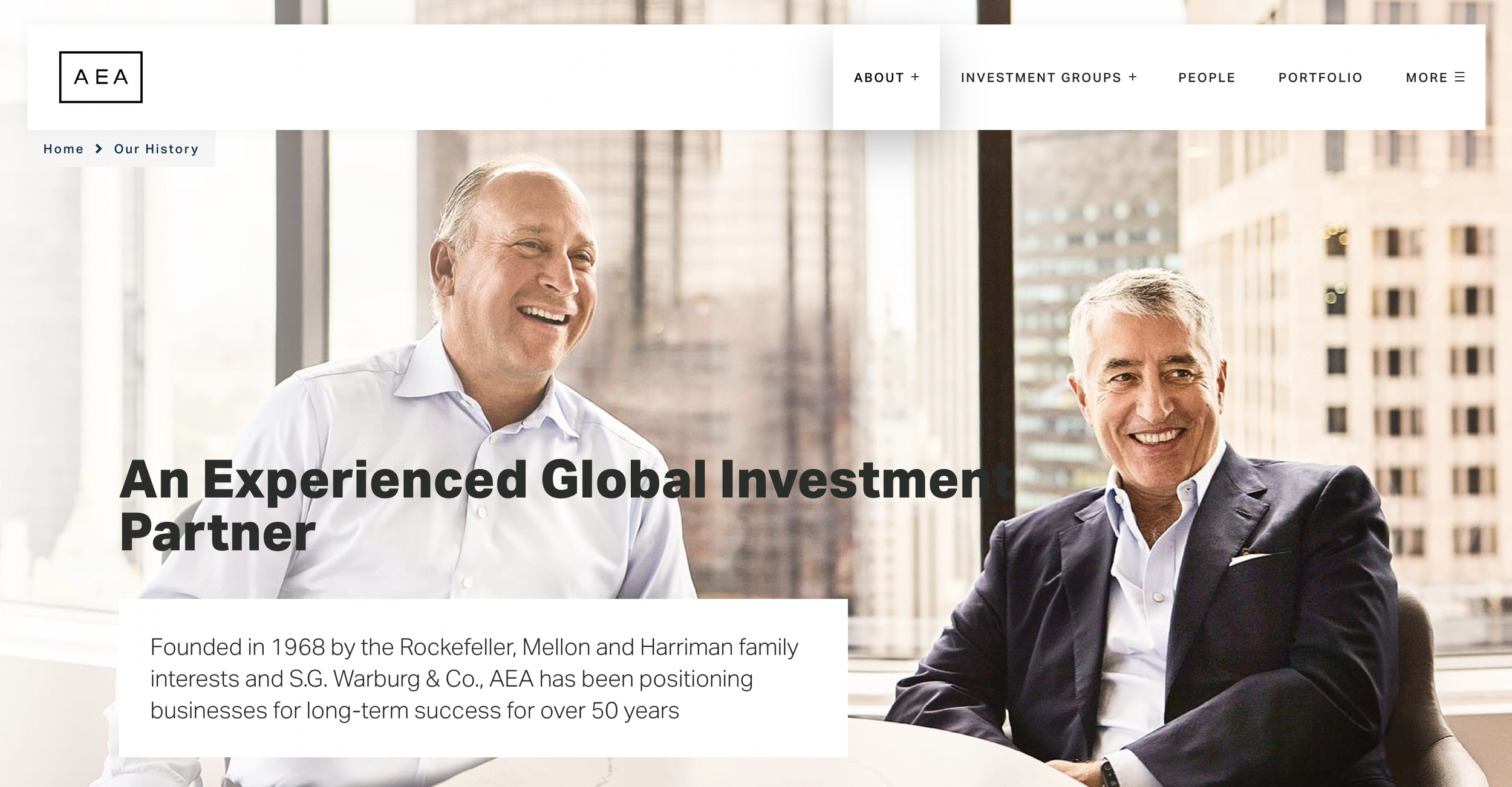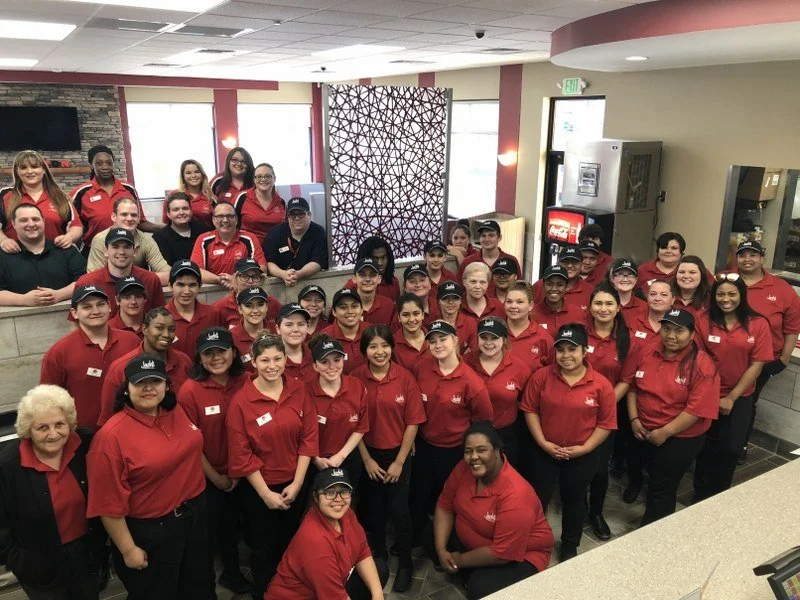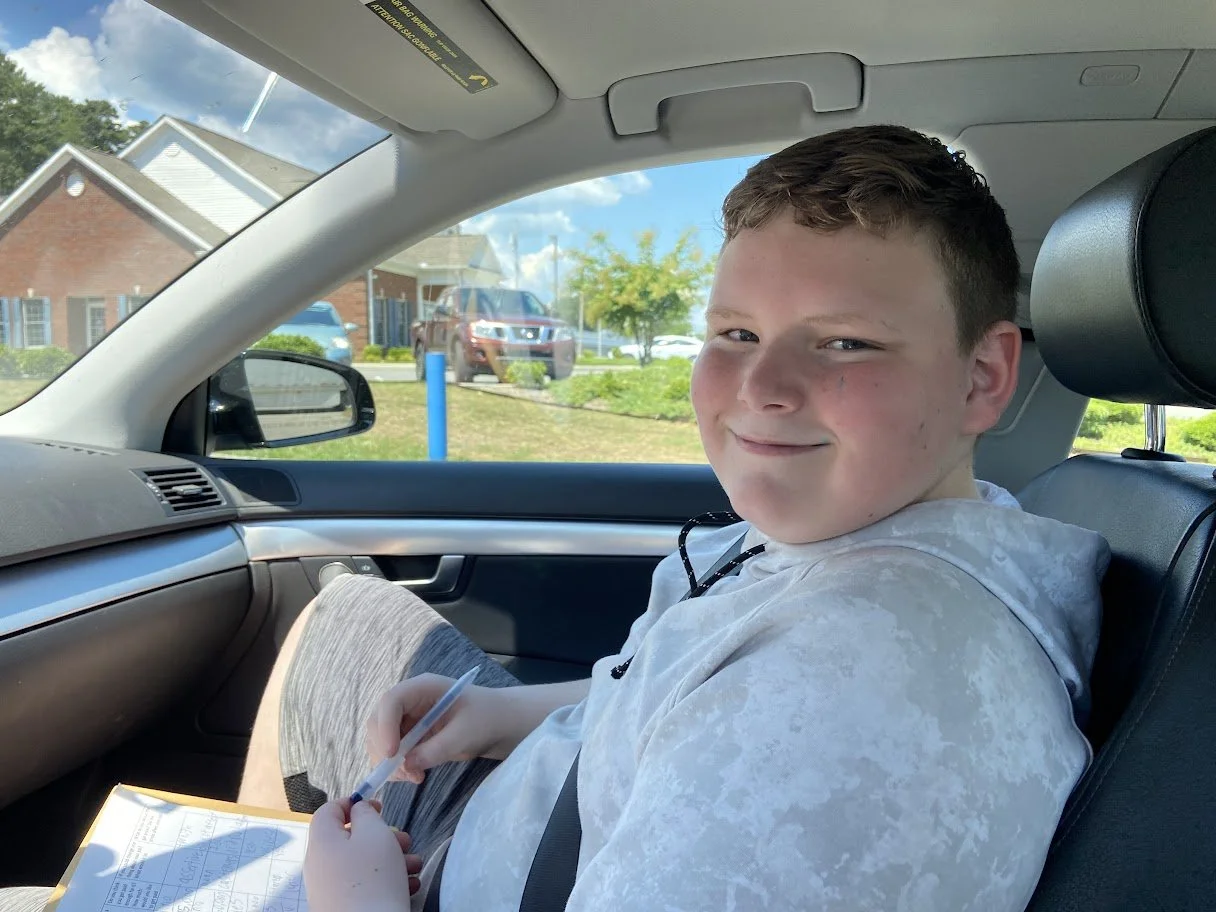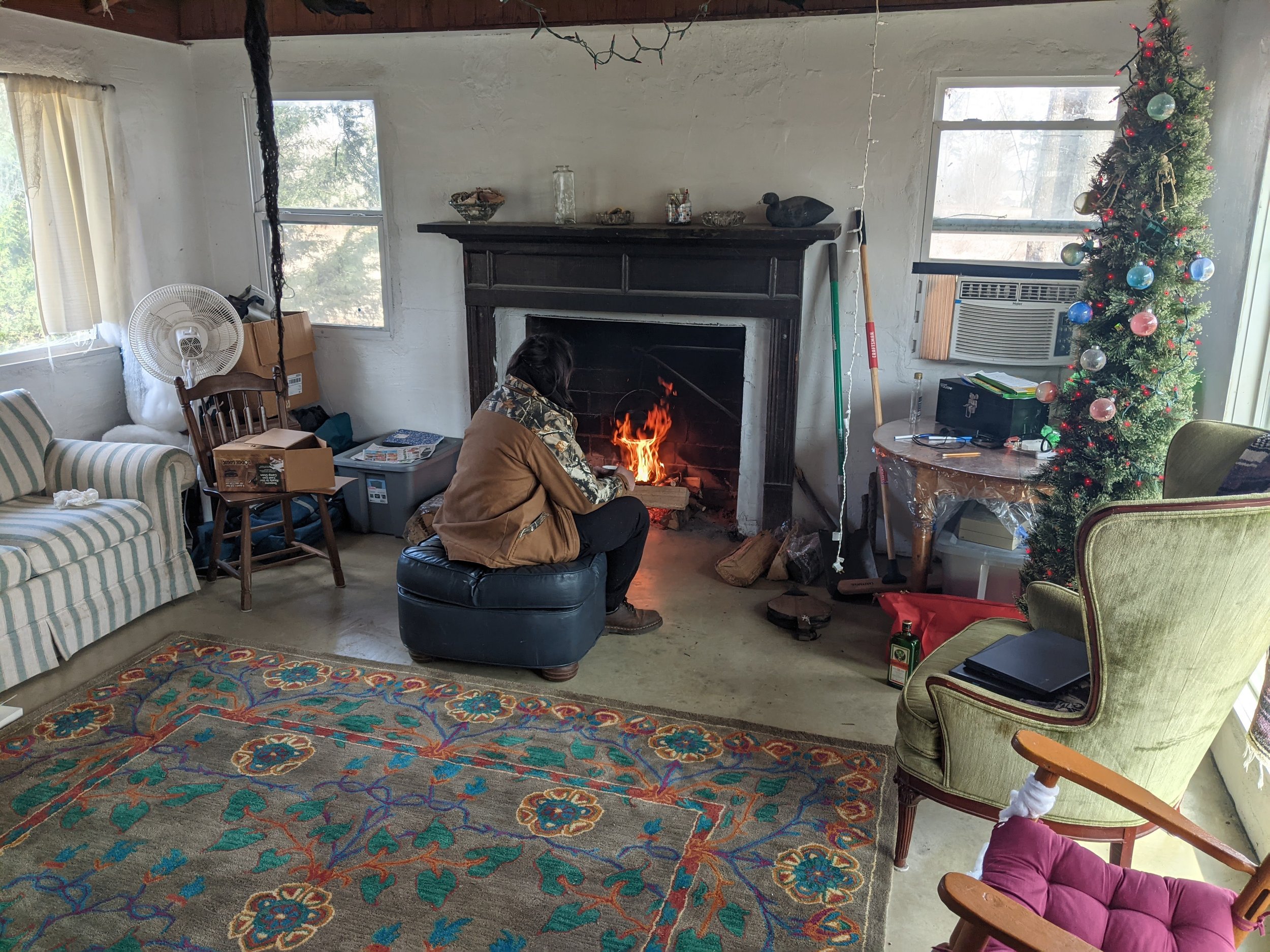A Cabin
No one knows the date for sure. But sometime in the fifties, in the decades after the TVA flooded the valley and created Lake Guntersville, DC Waid set a foundation on a little hill overlooking the lake. Poppa was a fireman who spent one day on and two days off, and he spent those 48 hour stretches on all sorts of odd jobs. The cabin was a special project, though. He brought his wife and two daughters there on weekends throughout their childhood, even when it was so cold they had to put newspapers in between the sheets.
Made of cinderblock, with a large sunroom he had designed around some windows he’d scavenged, the cabin wasn’t the most sophisticated architectural design in the area, but it had good bones.
60 or so years later - a year after his death - his grandson and a group of friends would approach the cabin and find that the spirit of the man who built it was still there.
by Daniel Waid Marshall, co-Founder of SMCEC
Daniel with his Mom, Candace Waid, and his Aunt Donna, 2022
Note From a Founder
His grandson is me. I brought a group of teacher friends to Alabama at the height of my arrogance about education. I was about to start my first year as a public high school teacher, and I had a lot of big ideas about how schools should work. Nearly all of them were wrong. But my questioning of the existing school system sent me in search of interesting alternatives and models to be learned from.
And so it happened that, a few days before our trip down south, I picked up a book called The Long Haul, an autobiography of sorts written by Myles Horton, one of the founders of Highlander Folk School.
Highlander, I like to tell people, is probably pound for pound the most impactful educational institution in the history of the United States. Highlander helped spark the labor movement in the south in the 1930s and 40s and then, most famously, was a hidden, central node in the social movement that came to be known as the Civil Rights Movement. Martin Luther King, Jr., Rosa Parks, and legendary educator Septima Clark (founder of the Citizenship Schools movement) all spent time at Highlander, giving and taking workshops. Highlander is the origin of “We Shall Overcome,” a song composed by Zilphia Horton, an illustrious arts and theater teacher (and wife of Myles Horton). Needless to say, reading the story of Highlander got us teachers thinking and gave us the courage to do something someone else might have reasonably called stupid.
A Model
A workshop at Highlander Folk School in the 1950s.
Donna walks through the property, 2018
DC Waid with his grandson, the author, Daniel Waid Marshall
A Camp
Highlander pioneered the practice of popular education in America. Popular education, which really just means “the people’s education,” is a form of teaching where the students teach each other rather than being told by an expert what to believe. Instead of memorizing facts, popular education gives students real responsibilities, real power, and real problems that need to be solved.
A few years later, after harassing almost everyone in the area about what we should do with the cabin and how we should do it, we settled on an idea for a free summer camp where we could test out some of our theories about education. We called the camp Lamplight, and had our first session in the summer of 2019.
We had hoped for nothing more than a failure that didn’t hurt anyone and that we could learn from. But the camp was successful beyond our wildest dreams. We had a small group that first year, and according to Kayleigh, one of our first-year campers, we “lacked structure,” but there was something magical about those three weeks, and we all knew it. (Today, Kayleigh is part of the committee that is designing our 2023 curriculum, so its her problem now.)
Our flyer for Year 2 (2021)
Lamplight Summer 2022
2019-present
On the first day of camp, we realized that we had bitten off more than we could chew. I had convinced everyone that we should run the camp from 9AM - 7PM and provide three meals, as well as transportation to and from the camp. I felt that until we knew we had a good educational model, the most we could promise the families entrusting us with their kids was 3 good meals and a day of childcare.
But now, we were exhausted. After a long first day, we sat together for a 9PM staff meeting and decided that we couldn’t do it again. We had to shorten the day. We realized, however, that we had told the kids the day before that it was their camp. Who were we to make a big change in the schedule without asking them first?
We decided to call a meeting and try to pass a proposal to shorten the day. We explained to the kids that we cared about them and wanted them to have a great camp but we were tired. We asked for any objections, expecting to be done with the conversation. One camper meekly raised her hand. “I kind of like it here,” she said. The campers blocked our proposal until we made a compromise that still forms the basis of our schedule today. We end earlier but on Fridays we have a campfire until 9PM. Now we know that some of the most memorable moments at camp happen at campfire, and I’m not sure what Lamplight would be like without it.
A “Packmeeting,” 2019
Caring Heart
Three years later, Lamplight was a juggernaught. (Okay, maybe not, but we had added staff members and campers every year, had close to a 100% return rate for campers and a 95% crying-on-the-last-day rate each year.) Just as importantly, we had become a small part of an incredibly important new institution, something that would multiply our work a thousand times over. Felicia Jones happened to be the mother of the camper who had ruined our schedule changes that summer.
Felicia approached us one day with a question. How exactly do you go about setting up a nonprofit? Felicia had sensed an opportunity to do something big. The thrift store she had worked at for years was moving, and the building they were vacating was available. What if she started her own thrift store? We gave her all the support we could muster, which frankly wasn’t much, but she bit by bit began to put the puzzle pieces together to make her dream a reality. She made an agreement with the landlord, secured funding, and went about doing what she does best: building a community that makes everyone feel at home.
Today, Caring Heart Thrift Store is a massive success, providing basic hygiene and food products to over 150 teens in the area as well as sustainable funding for three nonprofits in the county (including Lamplight). Caring Heart is still our closest partner and is collaborating with us on the creation of a new year-round teen leadership program called LEAD.
Cooperative Education
It was after 3 years of Lamplight and 6 years teaching in the public school system that I decided to move to Paris. At first, this seems like a long way from Alabama. But considering I did it because I was in love and things didn’t work out, it’s actually one of the most country things I could have done.
But while I was in Paris, I started work on a project that seemed too good to be true. An old friend of mine was working at a company in Boston whose founders were looking to transition ownership of the company to its nearly 1000 workers. My friend had followed Lamplight for years and knew that the entire idea of the camp was for the kids to take it over from us. He set up an interview and they hired me part-time to research worker-ownership for them and advise on its implementation.
Over the course of the next year, I gained an international network of friends and mentors in the worker-ownership world. I visited the Mondragon Corporation in the Basque region of Spain, maybe the most famous worker-owned business in the world, with almost 100,000 worker-owners and around 100 businesses. (I even convinced them to let me bring Kieran Driskell, our Basque-in-residence, a multi-talented chef and three-time Lamplight staff member.) At Mondragon, I began to realize the power of worker-ownership to not only transform the lives of workers but of whole communities. What would happen if Alabama, with all of its plants and farms and factories, actually kept all of the wealth it produced?
Spain looked like Alabama to me. The green hills and little farms, the scattered factories and creeping fog, the backcountry roads, the incredible food, the wonderful people. There was a big difference though: everyone in the Basque country seemed like they were doing alright for themselves. Even the working class, rural areas we drove through seemed a world apart from the infrastructure in Alabama.
I had a sudden memory from a few years back: driving to my mom’s old neighborhood of East Thomas the day before her birthday and watching her walk through the charred remains of her childhood home, which had been abandoned and then burned (or maybe the other way around).
Then another memory: driving past the hospital where both my Mom and Aunt were born, a concrete carcass in the middle of the city, never fully destroyed, rotting in the open. (Demolition of Carraway Hospital started in August 2022, a decade and a half after it closed.)
Photo Credit: abandonedsoutheast.com
Becca Jones, daughter of Felicia Jones, recently led a food drive that gave away over 11,000 meals to other kids during the holidays. After the food drive, she researched food insecurity in Marshall County. She found that here over one in four children don’t have reliable access to enough food, and we’re one of the better counties in Alabama. (The thrift store her Mom started, Caring Heart, has a Teen Pantry that serves over 150 local kids regularly.)
In the Basque Country, where a significant part of the economy is worker-owned, they have a “serious poverty” rate of just 6%, the lowest “risk of poverty” rate in Spain, and one of the lowest gaps between the rich and poor in all of Europe.
Alabama generates much more wealth per person than the Basque Country. But where does all of that wealth go?
One day at Lamplight, we got interested in exactly this question. One of our campers was working at Jack’s, a fast food chain headquartered in Birmingham which serves southern food across Alabama, Georgia, Tennessee and Mississippi. At the time, she was making entry level wages at Jack’s, which is just above the $7.25 minimum wage in Alabama, or about $16,000 after a year working full time.
We decided to follow the money. When one of us went to Jack’s and spent our money, where did it go? We knew some went to pay the workers, some went towards buying machines and supplies and rent, but eventually, we knew there was a profit leftover. Who gets the profits from Jack’s?
It turns out, the owner of Jack’s is AEA Investors, a private equity firm located in one of the richest neighborhoods of New York City. All across the south, regular people were paying Jack’s, and that money was getting funnelled to one of the richest cities in the world. Of course, AEA itself doesn’t really “own Jack’s.” As a private equity firm, AEA hires the people that actually run Jack’s and collects the profits at the end and gives the money to their own investors. The client list of AEA is secret, so we have no idea who is really getting the profits. But they likely aren’t the people who eat or work at Jack’s.
This made me wonder: What if the people of Alabama, whose hard work powers factories, mines, and farms that keep the rest of the country running, actually got to keep the value they produced? What would Alabama have looked like today if, in the time of my Mom’s childhood, companies were set up to benefit their local economy?
The firm that owns Jack’s, AEA Partners
Jack’s: A Case Study
Part 6: The Power of Ownership
This past summer, one of our campers showed me his new favorite song: International Harvester.
I had been reading about Harvester for weeks at that point. More specifically, I had been reading about the miraculous story of a Harvester factory in Springfield, Missouri whose workers saved their own jobs by taking out almost $8 million in loans and buying their own business unit, which they renamed Springfield Remanufacturing, or SRC.
The story became a series of best-selling books by CEO Jack Stack, which describe how SRC unlocked the power of ownership by turning their business management system into “the Great Game of Business,” an educational program that was built into the everyday routines of workers. The Game taught them about business and finance, but above all, it instilled in them a powerful culture of ownership. Stack explains: “It’s all about leveraging the informal training process, using the regular routines of the company to promote continuous learning… Nobody can think and act like an owner without understanding the basic rules of business, and most people don’t understand them.”
In 1983, SRC’s stock was worth 10 cents a share. By 2015, their stock was worth almost $200 a share and they had long paid off all of their original debt. Today, SRC employee-owners use their business training to become entrepreneurs that diversify the holdings of the original business. SRC has diversified into over 60 companies and has over 2,000 worker-owners who still own 100% of the company. Workers routinely retire with over a million dollars of stock in an area where the average price of a house is just over $200,000.
Back to the Cabin
In September of 2022, I moved to the cabin full time with Kevin Burns, a Lamplight co-founder and one of the best teachers I have ever seen. It had been a year of intensive research and experimentation with worker-ownership and I had come to a few big conclusions.
1) The most promising future for working people was one in which they all could have access to the dignity and prosperity of ownership.
2) Worker-ownership was not only viable economically but a competitive advantage if used correctly.
3) Unlocking ownership’s competitive advantage is a question of mindset and skillset; that is, it is a question of education.
Kevin and I launched the Sand Mountain Cooperative Education Center with the mission to foster and strengthen ownership institutions in our region and train the next generation of workers to be capable, savvy, and successful owners. What would happen if we took our inspiration from the educational techniques of Highlander, the business model of Mondragon, and the management techniques of SRC, and put them all together? What could the future look like for our campers if they took their ownership mindset and applied it to something bigger than a camp? What if we made it possible for all people to not just think, feel, and act like owners, but to become actual owners?
The cabin with the early morning sun reflecting on the big window.


